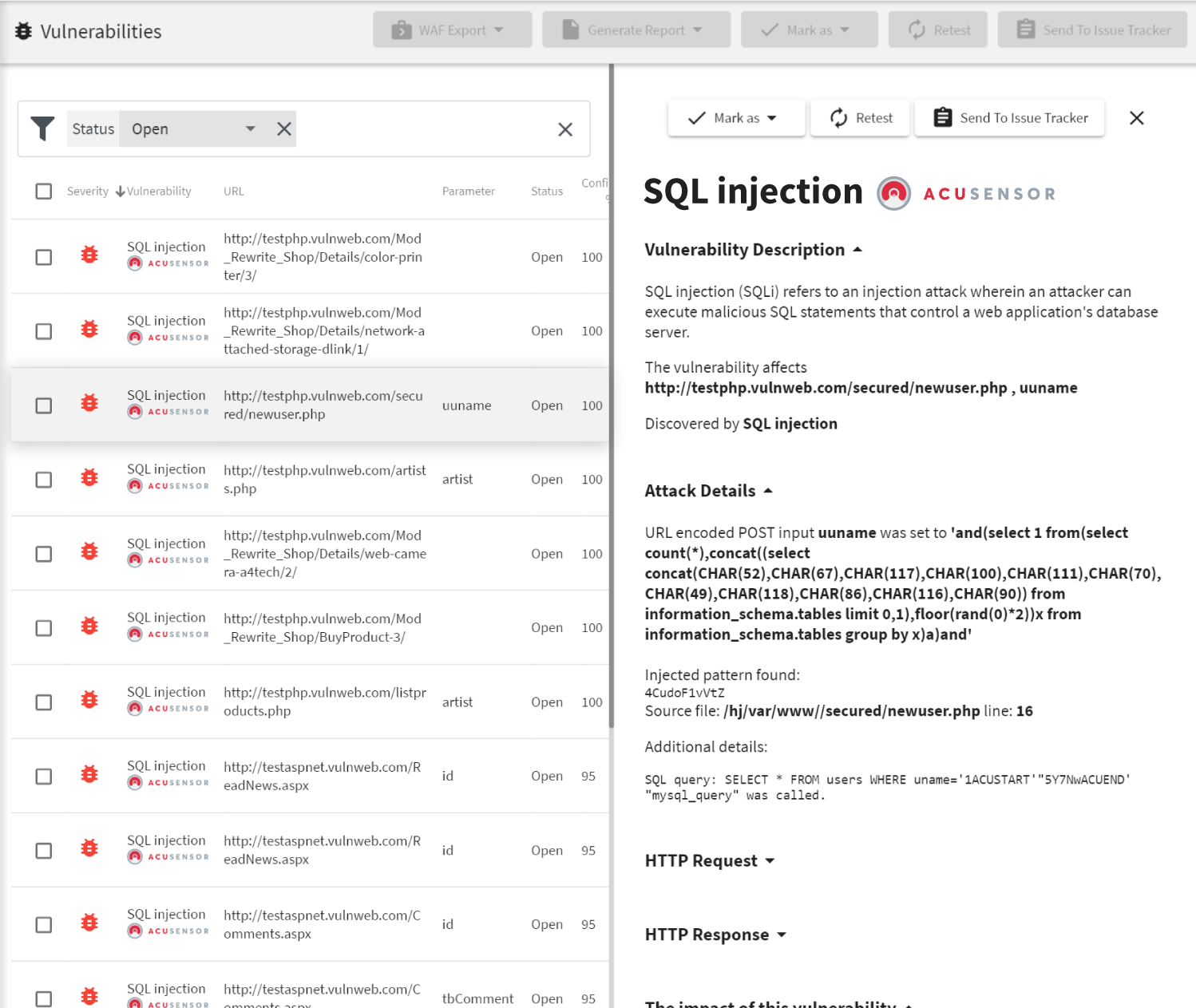Unlike traditional thick-client applications, which are locked away behind corporate firewalls, web applications are typically accessible from outside corporate networks and potentially open to dangers such as SQL Injection and application-layer denial of service attacks. This makes web application security and web service security a different beast altogether. Moreover, in case of attacks such as Cross-site Scripting, client-side JavaScript source code is right there in the browser for any malicious user to tinker with. With so many threats to sensitive data, it’s no surprise many organizations are seeking tools like DAST solutions to help them secure their software development life cycle.

Defend Against Known Application Vulnerabilities
The first step to kick starting your web application security program is to look for known application vulnerabilities. Keeping known vulnerabilities out of your code base prevents attackers from easily exploiting them and running malicious code. Attacks such as SQL injection and Cross-site Scripting are usually much easier to fix than to find them, so educating developers about best practices, defining a security policy and enforcing development security standards are all important approaches when defending against web security vulnerabilities. Acunetix is a software product for online web application security testing which helps you quickly and easily identify known vulnerabilities, as well as vulnerabilities in any website or web application, including sites built with hard-to-scan HTML5 and JavaScript Single Page Applications (SPAs). With Acunetix you can:- Discover in excess of more than 7,000 security vulnerabilities
- Detect SQL Injection and Cross-site Scripting and all of their variants
- Automatically scan all website files with custom form authentication or other custom access controls and session management.

Defend Your Entire Attack Surface
Web applications have a large attack surface and security threats can come from anywhere, including third-party code. Vulnerabilities can exist in several layers of an application, be it in the frontend, the backend or even within web server configurations. With built-in support for exporting discovered vulnerabilities to the most popular security tools such as web application firewalls, you can take automated testing even further. Virtually patching the vulnerabilities in production will give you enough breathing room to fully and carefully undergo remediation. Additionally, Acunetix can find security issues beyond the typical black-box scanning approach thanks to its AcuSensor gray-box scanning technology an additional component of Acunetix. With AcuSensor, Acunetix can automatically examine Java, ASP.NET and PHP server-side code that is being executed. This allows Acunetix to pinpoint the exact line of code where vulnerabilities lie, as well as dramatically reduce an already low false positive rate.
Get Actionable Insights into Your Web Application Vulnerabilities
By using tools to help you simulate web application attacks, you’ll be in a position to find and fix security vulnerabilities before an attacker has the chance to exploit them. A vulnerability scanner like Acunetix also recommends actions that you can take to correct the vulnerabilities it identifies, as well as the ability to retest fixes. Acunetix also allows you to produce dozens of technical and compliance reports with actionable information web application developers, security professionals, and regulators can use to assess and reduce security risks:- Out-of-the-box vulnerability management tools including historic trends, and prioritization
- Integration with popular Issue Trackers such as Atlassian Jira, GitHub, GitLab, Microsoft Team Foundation Server, Bugzilla, and Mantis
- Easy to generate compliance reports for PCI DSS compliance, OWASP Top 10 compliance, ISO 27001 compliance and HIPAA compliance
Recommended reading
Learn more about prominent vulnerabilities, keep up with recent product updates, and catch the latest news from Acunetix.

“We use Acunetix as part of our Security in the SDLC and to test code in DEV and SIT before being promoted to Production.”
Kurt Zanzi, Xerox CA-MMIS Information Securtiy Office, Xerox